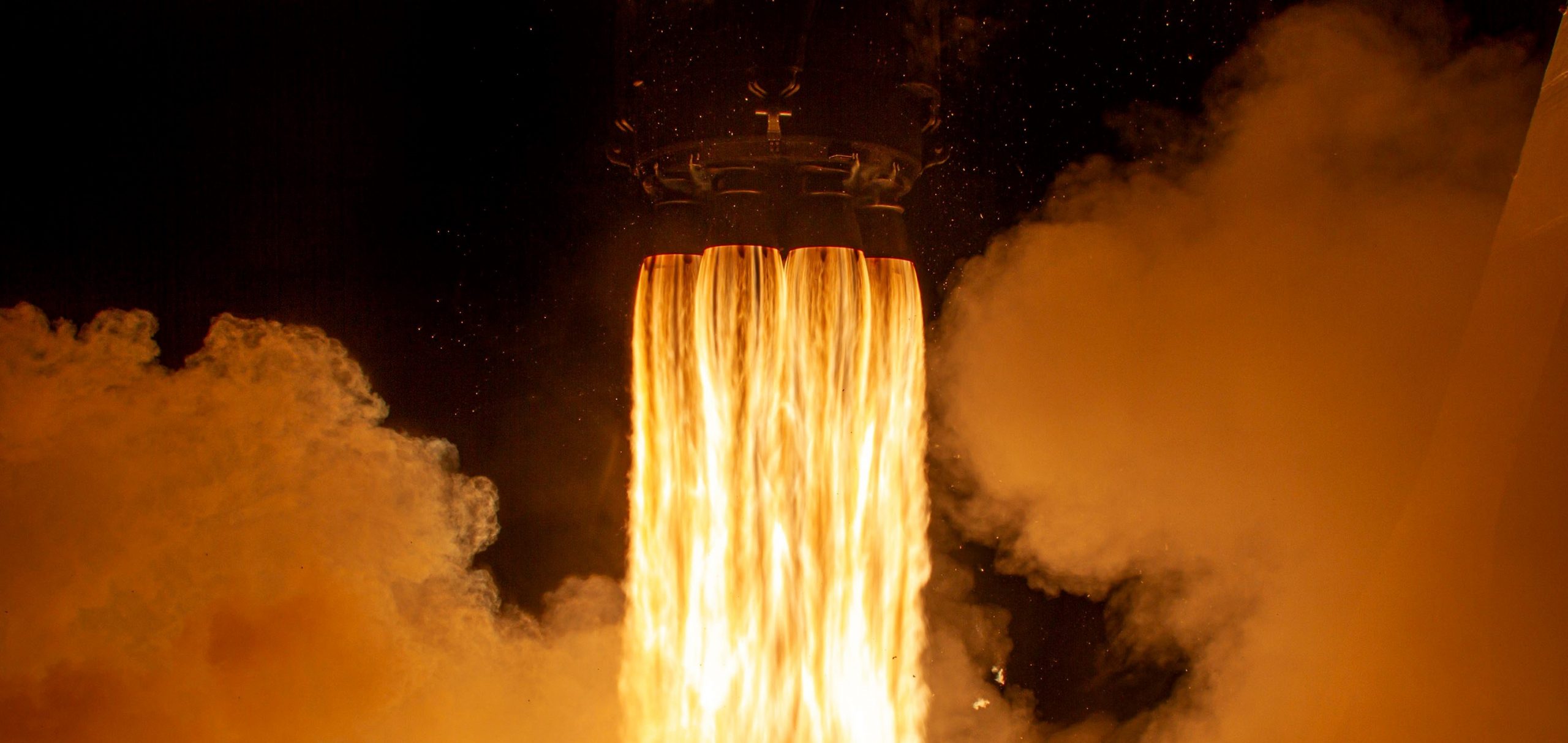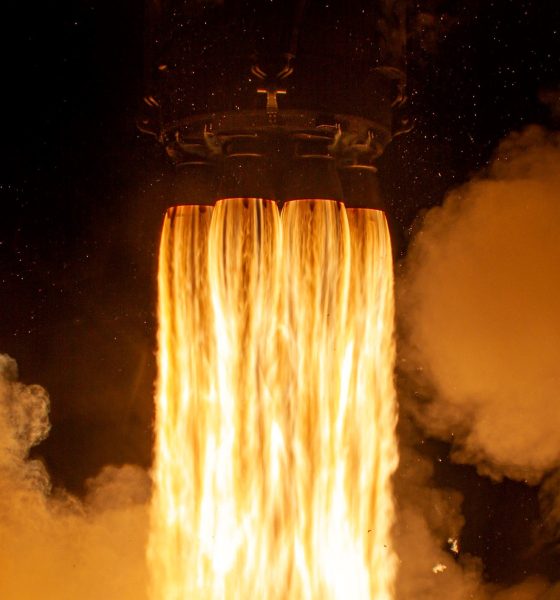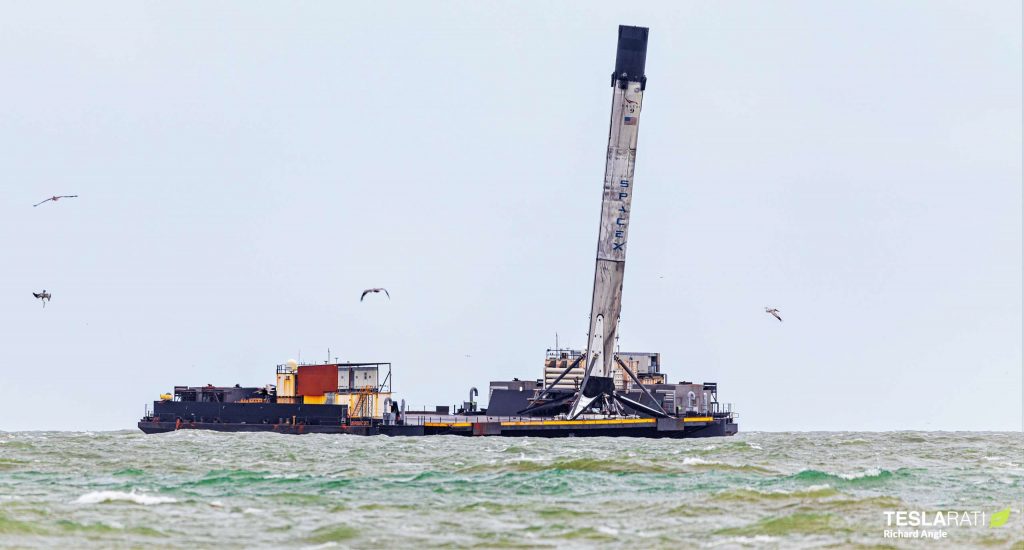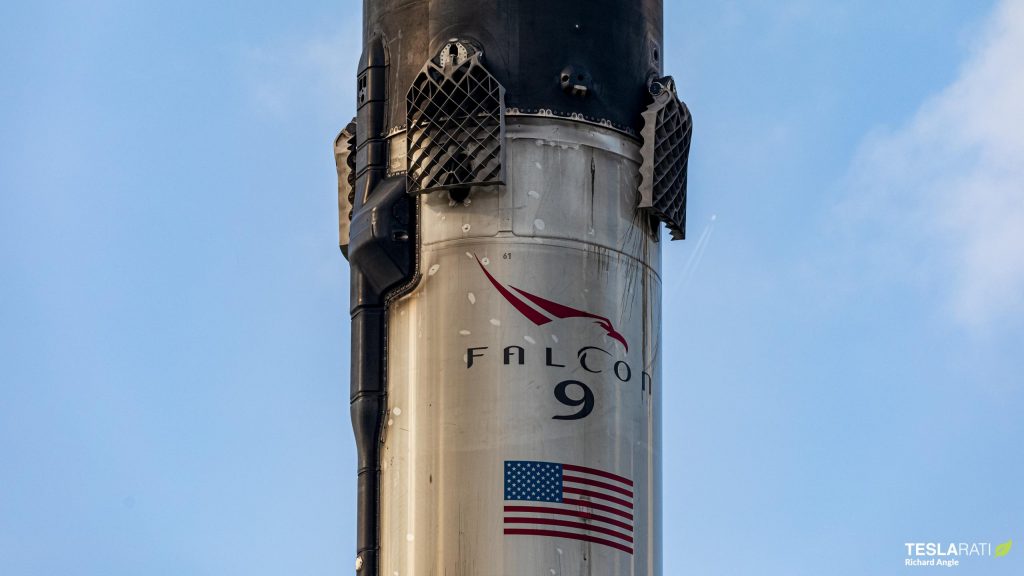

News
SpaceX fires up rocket for second NASA spacecraft launch in two weeks
SpaceX says it has successfully static fired Falcon 9 ahead of the company’s second scientific NASA spacecraft launch in just two weeks.
On November 24th, SpaceX successfully launched the small Double Asteroid Redirection Test (DART) spacecraft, marking Falcon 9’s first direct interplanetary launch and the rocket’s first flight-proven mission for NASA’s Launch Service Program (LSP). Now, as early as 1am EST (06:00 UTC) on Thursday, December 9th, SpaceX is on track to launch an even tinier NASA spacecraft known as the Imaging X-ray Polarimetry Explorer or IXPE. A telescope designed to survey some of the most extreme environments in the known universe, IXPE was originally meant to launch on the small but expensive and oft-delayed Pegasus XL rocket and weighs about 325 kilograms (720 lb) as a result.
Instead, in mid-2019, SpaceX effectively stole NASA’s IXPE launch contract out from under Orbital ATK in the midst of chronic delays of a different Pegasus XL NASA mission, bidding just over $50 million to launch the smallsat on Falcon 9. Some two years behind schedule when it finally completed the mission, Pegasus XL ultimately launched NASA’s similarly small ICON spacecraft in October 2019 for the equivalent of ~$66 million in 2021
In other words, SpaceX is charging NASA less than Orbital ATK charged to launch ICON on a rocket capable of delivering 600 kg (~1300 lb) to low Earth orbit (LEO) to launch IXPE on a rocket capable of launching about 16,000 kg (~35,000 lb) to the same orbit. Even then, despite Falcon 9’s comparatively dirt-cheap pricing relative to the performance it offers, the IXPE launch should still be profitable for SpaceX. In the recent past, CEO Elon Musk and a few other executives have indicated that the cost to SpaceX to launch a flight-proven Falcon 9 is between $15 million and $28 million depending on how costs are measured.
That is to say that even at $50M, SpaceX has plenty of breathing room to drop launch costs even further if it ever runs into actual competitive pressure. Since the first booster recovery in December 2015 and the first booster reuse in March 2017, Falcon 9 is still the world’s only reusable orbital-class rocket. IXPE is the latest in a line of NASA missions to benefit from SpaceX’s unprecedented private expertise and the company has assigned Falcon 9 booster B1061 to launch the ~$140M spacecraft.


The booster has currently launched eight astronauts, three Dragons, and one large geostationary communications satellite in its four-launch, 13-month career and IXPE will be the booster’s fifth spaceflight and orbital-class launch since November 2020. It will also be the smallest dedicated payload a Falcon 9 rocket has ever launched by a large margin, making for a very empty payload fairing at liftoff.
On December 4th, SpaceX successfully performed a launch rehearsal, fully fueling Falcon 9 B1061 and a new upper stage and briefly firing up the booster’s nine Merlin 1D engines to verify that the vehicle is ready for flight. The company has since brought Falcon 9 horizontal and rolled it back into Kennedy Space Center (KSC) Pad 39A’s main hangar, where the rocket’s payload fairing – containing IXPE – will be attached to the rest of the stack. IXPE will be SpaceX’s 28th launch in 2021 (a new record) and is the second of four or five East Coast Falcon 9 launches planned this December.
Read more about the IXPE spacecraft and its mission to observe black holes, dead stars, and other bizarre phenomena here.

News
Tesla FSD fleet is nearing 7 billion total miles, including 2.5 billion city miles
As can be seen on Tesla’s official FSD webpage, vehicles equipped with the system have now navigated over 6.99 billion miles.

Tesla’s Full Self-Driving (Supervised) fleet is closing in on almost 7 billion total miles driven, as per data posted by the company on its official FSD webpage.
These figures hint at the massive scale of data fueling Tesla’s rapid FSD improvements, which have been quite notable as of late.
FSD mileage milestones
As can be seen on Tesla’s official FSD webpage, vehicles equipped with the system have now navigated over 6.99 billion miles. Tesla owner and avid FSD tester Whole Mars Catalog also shared a screenshot indicating that from the nearly 7 billion miles traveled by the FSD fleet, more than 2.5 billion miles were driven inside cities.
City miles are particularly valuable for complex urban scenarios like unprotected turns, pedestrian interactions, and traffic lights. This is also the difference-maker for FSD, as only complex solutions, such as Waymo’s self-driving taxis, operate similarly on inner-city streets. And even then, incidents such as the San Francisco blackouts have proven challenging for sensor-rich vehicles like Waymos.
Tesla’s data edge
Tesla has a number of advantages in the autonomous vehicle sector, one of which is the size of its fleet and the number of vehicles training FSD on real-world roads. Tesla’s nearly 7 billion FSD miles then allow the company to roll out updates that make its vehicles behave like they are being driven by experienced drivers, even if they are operating on their own.
So notable are Tesla’s improvements to FSD that NVIDIA Director of Robotics Jim Fan, after experiencing FSD v14, noted that the system is the first AI that passes what he described as a “Physical Turing Test.”
“Despite knowing exactly how robot learning works, I still find it magical watching the steering wheel turn by itself. First it feels surreal, next it becomes routine. Then, like the smartphone, taking it away actively hurts. This is how humanity gets rewired and glued to god-like technologies,” Fan wrote in a post on X.
News
Tesla starts showing how FSD will change lives in Europe
Local officials tested the system on narrow country roads and were impressed by FSD’s smooth, human-like driving, with some calling the service a game-changer for everyday life in areas that are far from urban centers.

Tesla has launched Europe’s first public shuttle service using Full Self-Driving (Supervised) in the rural Eifelkreis Bitburg-Prüm region of Germany, demonstrating how the technology can restore independence and mobility for people who struggle with limited transport options.
Local officials tested the system on narrow country roads and were impressed by FSD’s smooth, human-like driving, with some calling the service a game-changer for everyday life in areas that are far from urban centers.
Officials see real impact on rural residents
Arzfeld Mayor Johannes Kuhl and District Administrator Andreas Kruppert personally tested the Tesla shuttle service. This allowed them to see just how well FSD navigated winding lanes and rural roads confidently. Kruppert said, “Autonomous driving sounds like science fiction to many, but we simply see here that it works totally well in rural regions too.” Kuhl, for his part, also noted that FSD “feels like a very experienced driver.”
The pilot complements the area’s “Citizen Bus” program, which provides on-demand rides for elderly residents who can no longer drive themselves. Tesla Europe shared a video of a demonstration of the service, highlighting how FSD gives people their freedom back, even in places where public transport is not as prevalent.
What the Ministry for Economic Affairs and Transport says
Rhineland-Palatinate’s Minister Daniela Schmitt supported the project, praising the collaboration that made this “first of its kind in Europe” possible. As per the ministry, the rural rollout for the service shows FSD’s potential beyond major cities, and it delivers tangible benefits like grocery runs, doctor visits, and social connections for isolated residents.
“Reliable and flexible mobility is especially vital in rural areas. With the launch of a shuttle service using self-driving vehicles (FSD supervised) by Tesla in the Eifelkreis Bitburg-Prüm, an innovative pilot project is now getting underway that complements local community bus services. It is the first project of its kind in Europe.
“The result is a real gain for rural mobility: greater accessibility, more flexibility and tangible benefits for everyday life. A strong signal for innovation, cooperation and future-oriented mobility beyond urban centers,” the ministry wrote in a LinkedIn post.
News
Tesla China quietly posts Robotaxi-related job listing
Tesla China is currently seeking a Low Voltage Electrical Engineer to work on circuit board design for the company’s autonomous vehicles.

Tesla has posted a new job listing in Shanghai explicitly tied to its Robotaxi program, fueling speculation that the company is preparing to launch its dedicated autonomous ride-hailing service in China.
As noted in the listing, Tesla China is currently seeking a Low Voltage Electrical Engineer to work on circuit board design for the company’s autonomous vehicles.
Robotaxi-specific role
The listing, which was shared on social media platform X by industry watcher @tslaming, suggested that Tesla China is looking to fill the role urgently. The job listing itself specifically mentions that the person hired for the role will be working on the Low Voltage Hardware team, which would design the circuit boards that would serve as the nervous system of the Robotaxi.
Key tasks for the role, as indicated in the job listing, include collaboration with PCB layout, firmware, mechanical, program management, and validation teams, among other responsibilities. The role is based in Shanghai.
China Robotaxi launch
China represents a massive potential market for robotaxis, with its dense urban centers and supportive policies in select cities. Tesla has limited permission to roll out FSD in the country, though despite this, its vehicles have been hailed as among the best in the market when it comes to autonomous features. So far, at least, it appears that China supports Tesla’s FSD and Robotaxi rollout.
This was hinted at in November, when Tesla brought the Cybercab to the 8th China International Import Expo (CIIE) in Shanghai, marking the first time that the autonomous two-seater was brought to the Asia-Pacific region. The vehicle, despite not having a release date in China, received a significant amount of interest among the event’s attendees.








